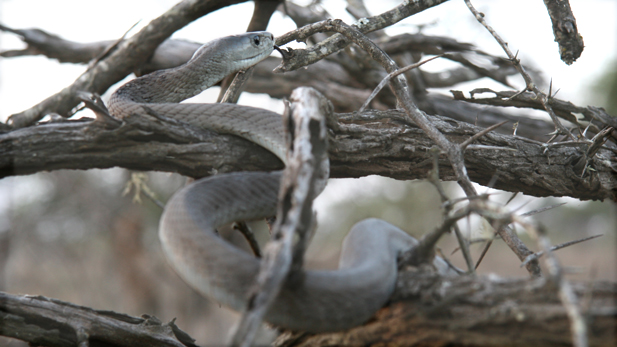The black mamba is one of Africa’s most dangerous and feared snakes, known for being aggressive when disturbed. Rearing up with its head four feet above the ground, it strikes with deadly precision, delivering venom that is packed with three different kinds of toxins 10 times more deadly than needed to kill an adult human. Without treatment, the mortality rate is 100 percent.
 The Black Mamba
The Black MambaUntil now, little has been known about the black mamba’s natural behavior in the wild because, in Africa, most people kill a black mamba on sight and feel lucky to have done so. But in the tiny country of Swaziland in southern Africa, a team of herpetologists has an entirely different “take” on these creatures and hopes their six-week study will change public perception of what they feel is the world’s most misunderstood snake.
Nature: Black Mamba, Wednesday at 8 p.m. on PBS-HD 6.


By submitting your comments, you hereby give AZPM the right to post your comments and potentially use them in any other form of media operated by this institution.